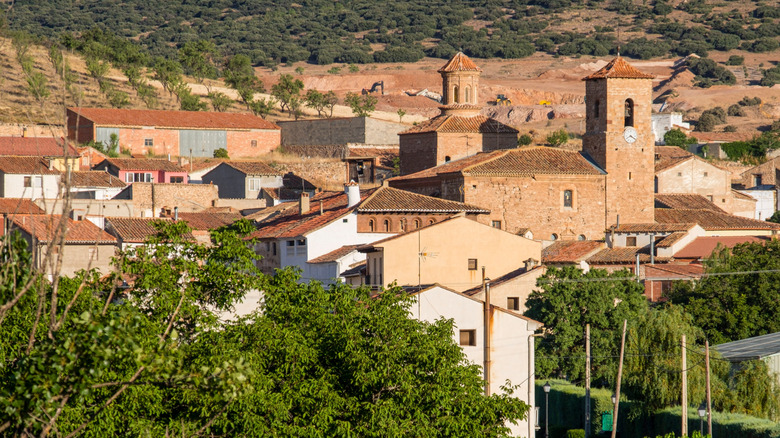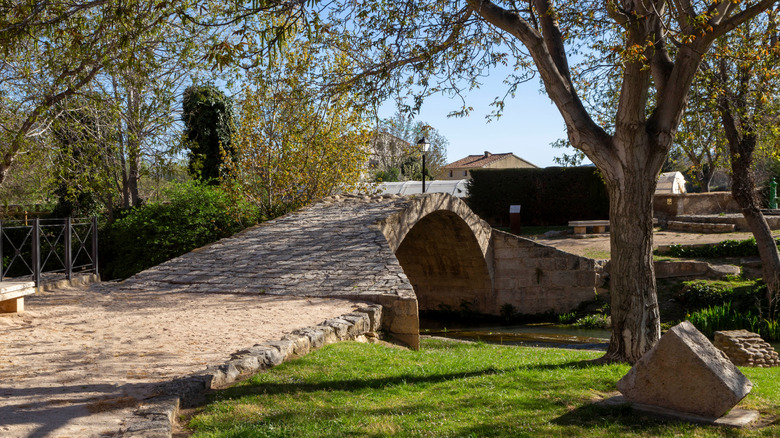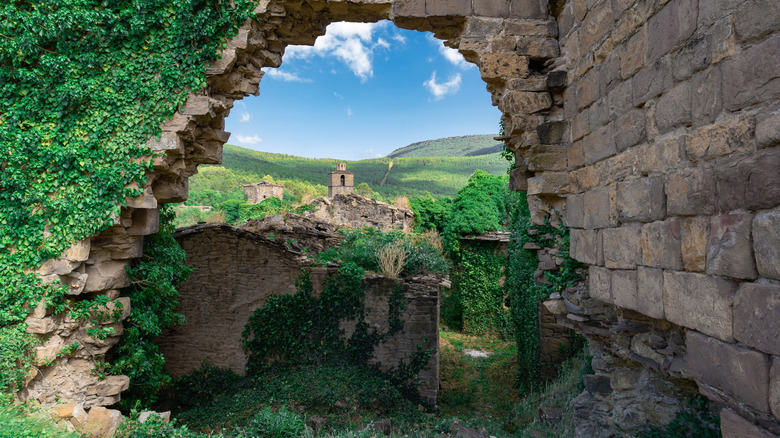Situated Between Madrid And Barcelona Is A Wildly Underrated Town Offering A Slice Of Spain's Countryside
In all likelihood, trips to Spain will target Barcelona or its capital, Madrid. Savvy travelers might target alternative options like Valencia, Seville, or Granada. Few, however, would brush aside these choices and head towards a small municipality of about 4,500 people, about midway between Barcelona and Madrid: Calamocha. Far from being devoid of life and things to do, Calamocha affords travelers a unique opportunity. You can stand in the middle of the town and its beige, stone structures, rotate and behold the lush hills of Aragón, and feel truly transported to a bygone, rustic age. Then you can hit the trails and walk through the Spanish countryside.
Calamocha really does have everything you could hope to find in Spain, minus the crowds (and, admittedly, the grandeur) of its busiest metropolises. There are old churches like the Iglesia Parroquial Santa María la Mayor de Calamocha, ancient landmarks like an actual Roman bridge in an ethnological park, and 16th-century manor houses like Tejada Palace and the Vicente Palace amidst a townscape of buildings that look like New World Spanish missions fused with late medieval architecture. And for foodies (particularly meat lovers), there's the honest-to-goodness Museo de Jamón (Ham Museum) that teaches old-world methods of animal husbandry and food preparation. And bonus: You can walk across the entire town, longways, in less than 30 minutes. But most critically of all, you can do all this against the backdrop of the Spanish countryside. There are even hiking trails north from the town, and a lagoon and wetlands are a short drive west.
Calamocha's stone churches, Roman bridge, and countryside
There's a surprising amount to do in Calamocha. Sure, you could burn through the town in a couple of hours and zip back to the city to get crushed by tourists (although there are ways to avoid crowds in Barcelona) or pickpocketed while rambling around Las Ramblas, an otherwise charming neighborhood. Or, you could fully steep yourself in the Spanish countryside for a day or two, breathe, soak in the air, hopefully stow the phone, and leave feeling like you lived a piece of history unique to Spain.
Your itinerary is straightforward and all walkable. The ethnographic park on the west side of Calamocha stands out, complete with a Roman bridge. That bridge is part of a series of sites that includes a 17th-century copper forge that drew from the area's natural resources, a 17th-century wool-washing house that also connects to the region's historical industries, and a 15th-century flour mill. While browsing these sites doesn't include staring at nature, it's possibly the best way to envision rural Spanish life in a pre-modern, pre-mass production age reliant on handmade metallurgical, textile, and agricultural goods.
Before or after this, you can swing by Calamocha's key buildings like Iglesia Parroquial Santa María la Mayor, Tejada Palace, or Museo de Jamón to or from the PR-TE-121 Trail. Walkable or bikeable, the trail is a reasonable 10 miles long round trip, hits a maximum elevation of about 3,450 feet, and allows for panoramic views of the Aragón countryside for miles around. You start on an old country road and wind through the rocky steppes of Los Tollos, past reforested European pine trees, along twin river basins, and more.
Winding your way to Calamocha to spend a night or two
Let's be honest: Visiting Calamocha requires extra time that not every itinerary is going to be able to accommodate. By car from Barcelona, it's going to take over four hours, but you can coast along just one road, the AP-2. By car from Madrid, it's a bit faster at just over three hours, but requires switching from the A-2 to the N-211. An internationally valid driver's license will go a long way here, especially if you use Calamocha as a waystation while traveling between Barcelona and Madrid. Or you could always depart from an underrated, Barcelona-adjacent town like Girona into the mix. You can poke through the Spanish countryside along the way, soak in the slow vibes of Aragón, and see sights that lots of tourists never even think about. Also, even though public transportation to and from Barcelona is faster than driving, public transportation to and from Madrid is slower.
But that's okay, because Calamocha is out of the way and is supposed to be. Otherwise, it wouldn't have the same charm. That's why staying overnight at least one night is the best option. That'll give you plenty of time to see all the sites we mentioned before, particularly the hiking trails, after which food and lodgings await. On that note, there's a variety of lodging choices in town. There's the ultra-cheap Hostal Torralba de los Sisones in one of Calamocha's signature, low, beige buildings ($26), to the standard, modern Hotel Fidalgo ($63), to a legit countryside villa-looking place a short drive out of town, Hotel El Molino ($124).


